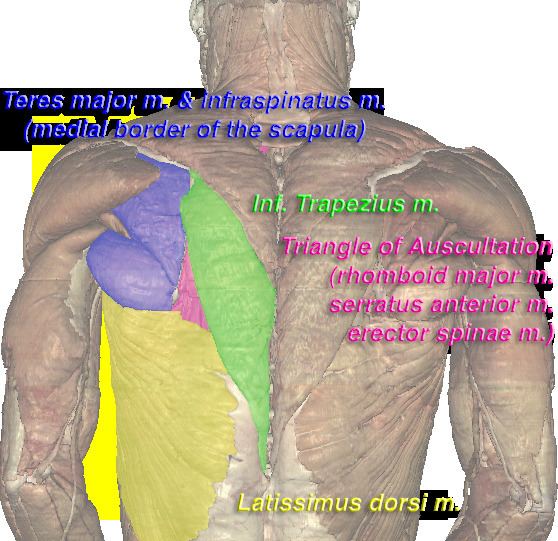Dorlands/Elsevier 12823351 FMA 75022 | TA A01.2.05.006 | |
 | ||
Latin trigonum auscultationis | ||
The triangle of auscultation of the lungs is a relative thinning of the musculature of the back, situated along the medial border of the scapula.
Contents
Boundaries
It has the following boundaries:
The superficial floor of the triangle is formed by the lateral portion of the erector spinae muscles. Deep to these muscles are the osseous portions of the 6th and 7th ribs and the internal and external intercostal muscles.
Typically, the triangle of auscultation is covered by the scapula. To better expose the triangle and listen to respiratory sounds with a stethoscope, patients are asked to fold their arms across their chest, laterally rotating the scapulae, while bending forward at the trunk, somewhat resembling a fetal position.
Function
Due to the relative thinning of the musculature of the back in the triangle, the posterior thoracic wall is closer to the skin surface, making respiratory sounds able to be heard more clearly with a stethoscope.
To better expose the floor of the triangle up of the posterior thoracic wall in the 6th and 7th intercostal space, a patient is asked to fold their arms across their chest, laterally rotating the scapulae, while bending forward at the trunk.
